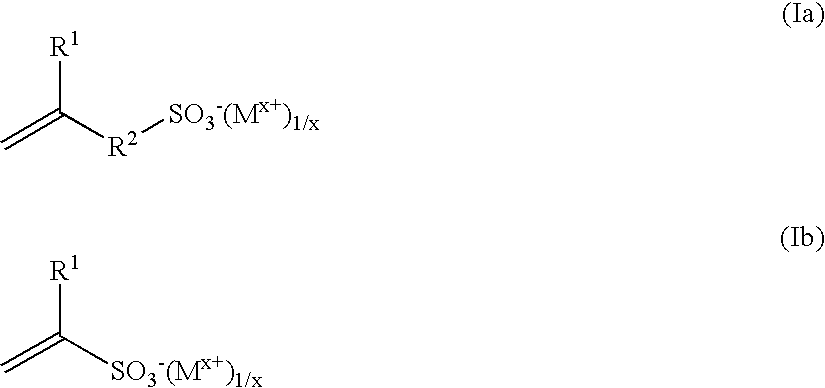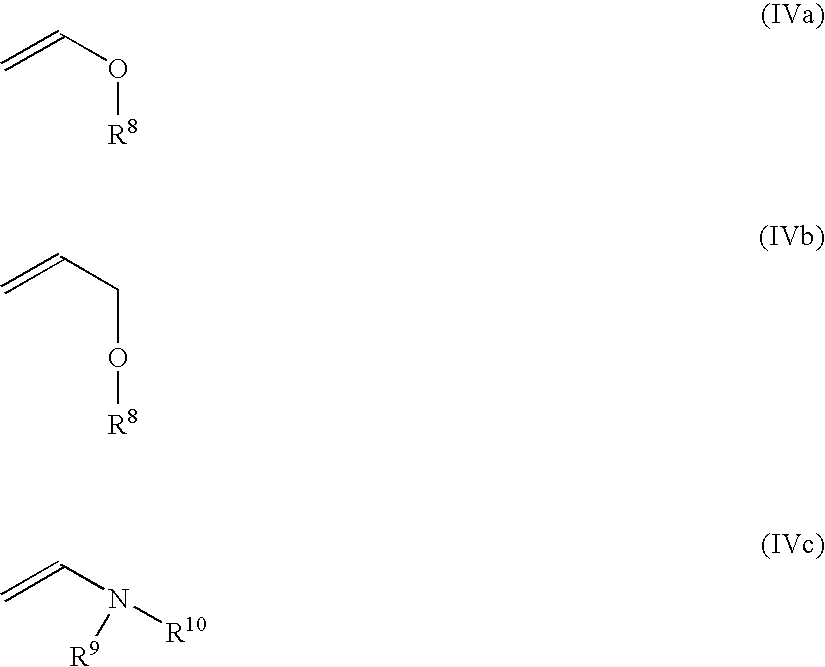Copolymer based on olefinic sulphonic acids
a technology of olefinic sulphonic acid and copolymer, which is applied in the direction of earthwork drilling, cleaning apparatus, drilling composition, etc., can solve the problems of oil or gas permeability dramatically deteriorating, blocked pores, and formation of drillings
- Summary
- Abstract
- Description
- Claims
- Application Information
AI Technical Summary
Benefits of technology
Problems solved by technology
Method used
Image
Examples
examples
1. Preparation Example, Solution Polymerization:
[0060] 6.1 g of calcium hydroxide were suspended in 270 g of tap water, and the amounts of monomer a), monomer b), monomer c), and monomer d) stated in Table 1 were added. The pH was adjusted to values between 5 and 11 with a 20% strength sodium hydroxide solution. Thereafter, the reaction solution was flushed with nitrogen and heated to 50 to 80° C. After addition of 7.3 g of sodium peroxodisulphate, the reaction was stirred for 3 hours at the respective reaction temperature. In order to obtain the polymers as powder, the reaction solutions were spray-dried or drum-dried.
2.1 Use Examples, Deep Well Cementing:
Formulation
[0061]
700 gof LaFarge class H cement276 gof tap water 3.5 gof a polymer according to the invention 27 gof NaCl
[0062] The water was initially introduced into a Warring blender, the cement was then added with the copolymer powder within 15 sec at low speed (4000 rpm) and the mixture was then homogenized at high spee...
PUM
| Property | Measurement | Unit |
|---|---|---|
| Temperature | aaaaa | aaaaa |
| Temperature | aaaaa | aaaaa |
| Percent by mass | aaaaa | aaaaa |
Abstract
Description
Claims
Application Information
 Login to View More
Login to View More - R&D
- Intellectual Property
- Life Sciences
- Materials
- Tech Scout
- Unparalleled Data Quality
- Higher Quality Content
- 60% Fewer Hallucinations
Browse by: Latest US Patents, China's latest patents, Technical Efficacy Thesaurus, Application Domain, Technology Topic, Popular Technical Reports.
© 2025 PatSnap. All rights reserved.Legal|Privacy policy|Modern Slavery Act Transparency Statement|Sitemap|About US| Contact US: help@patsnap.com



